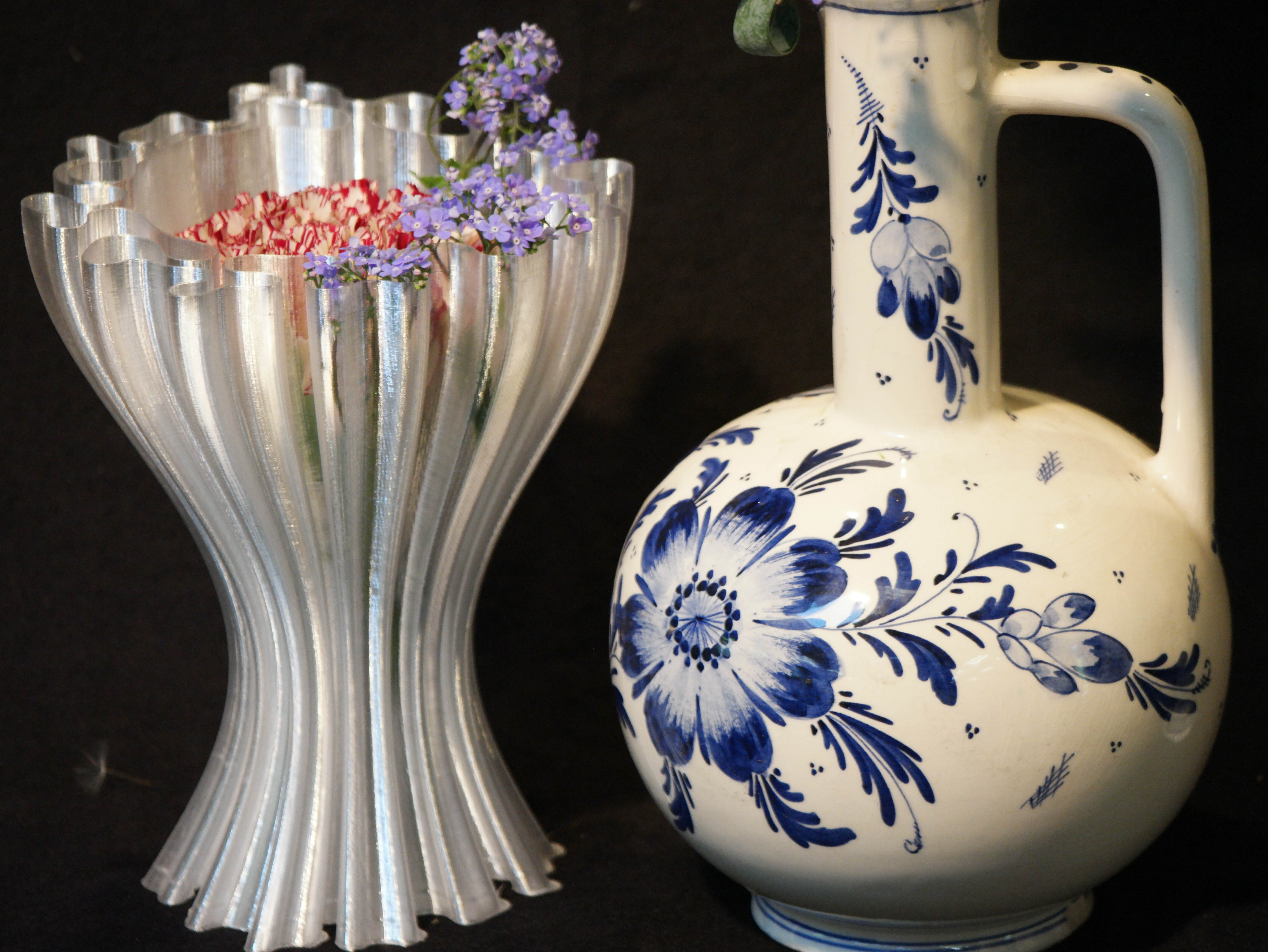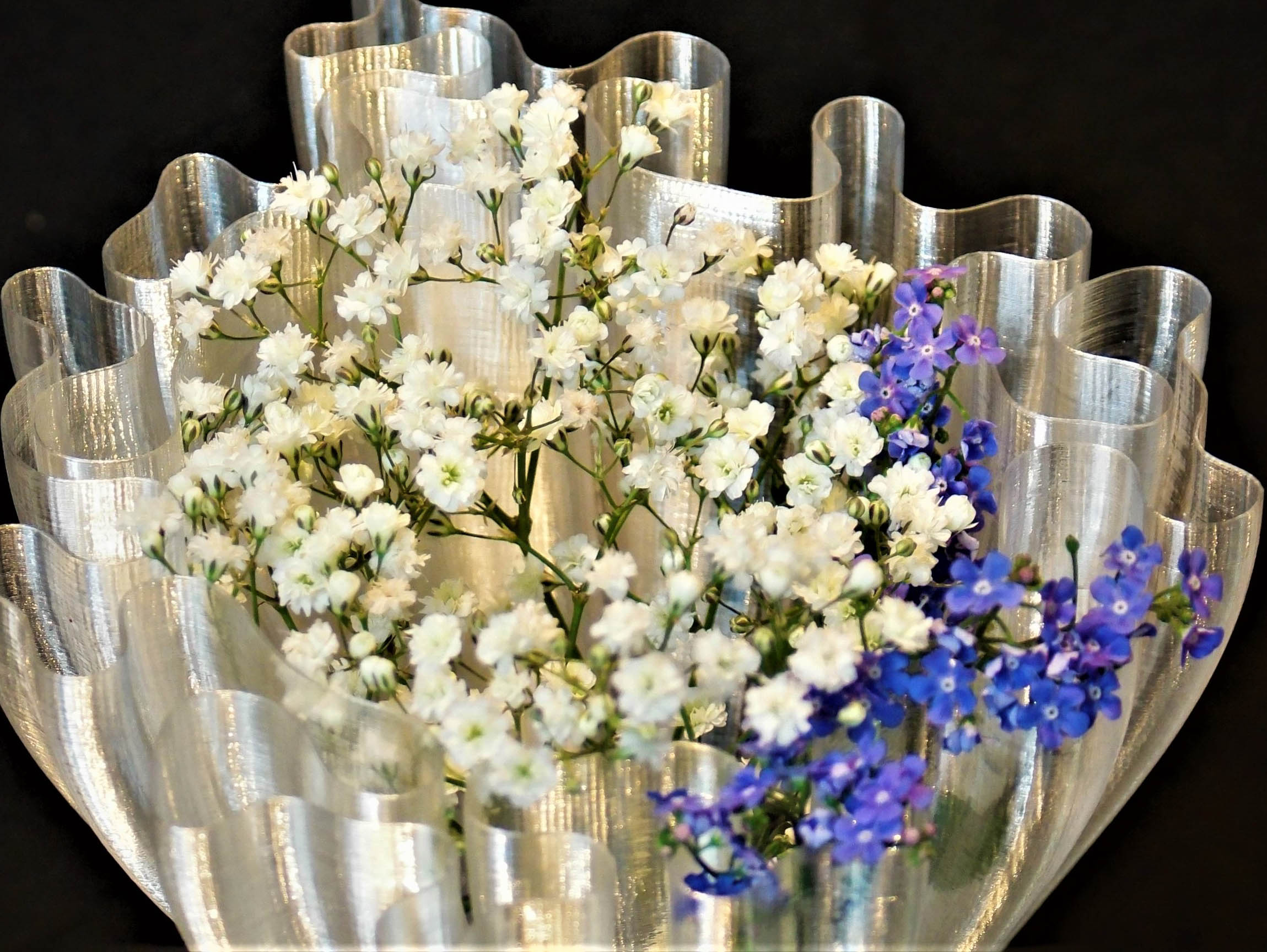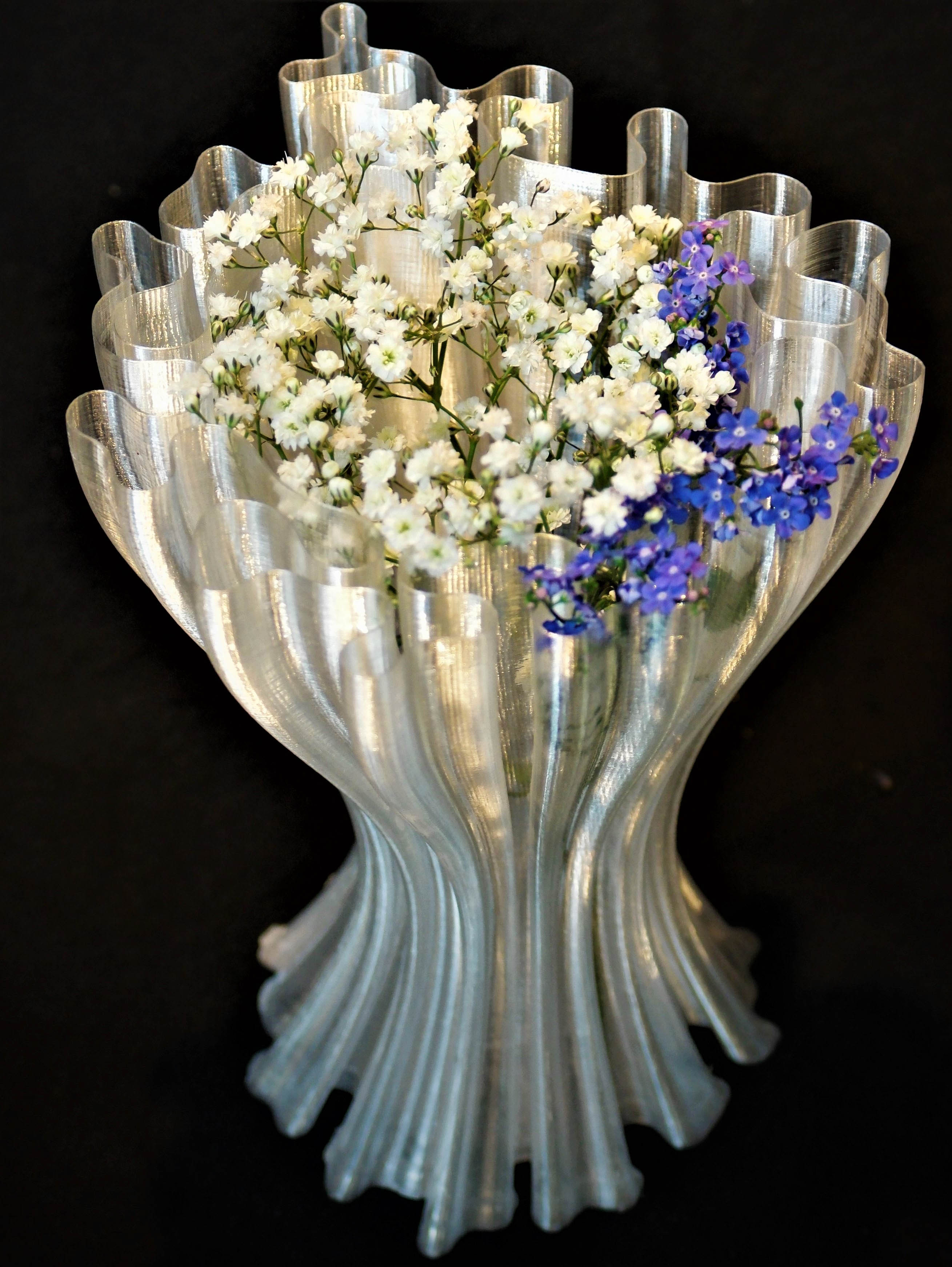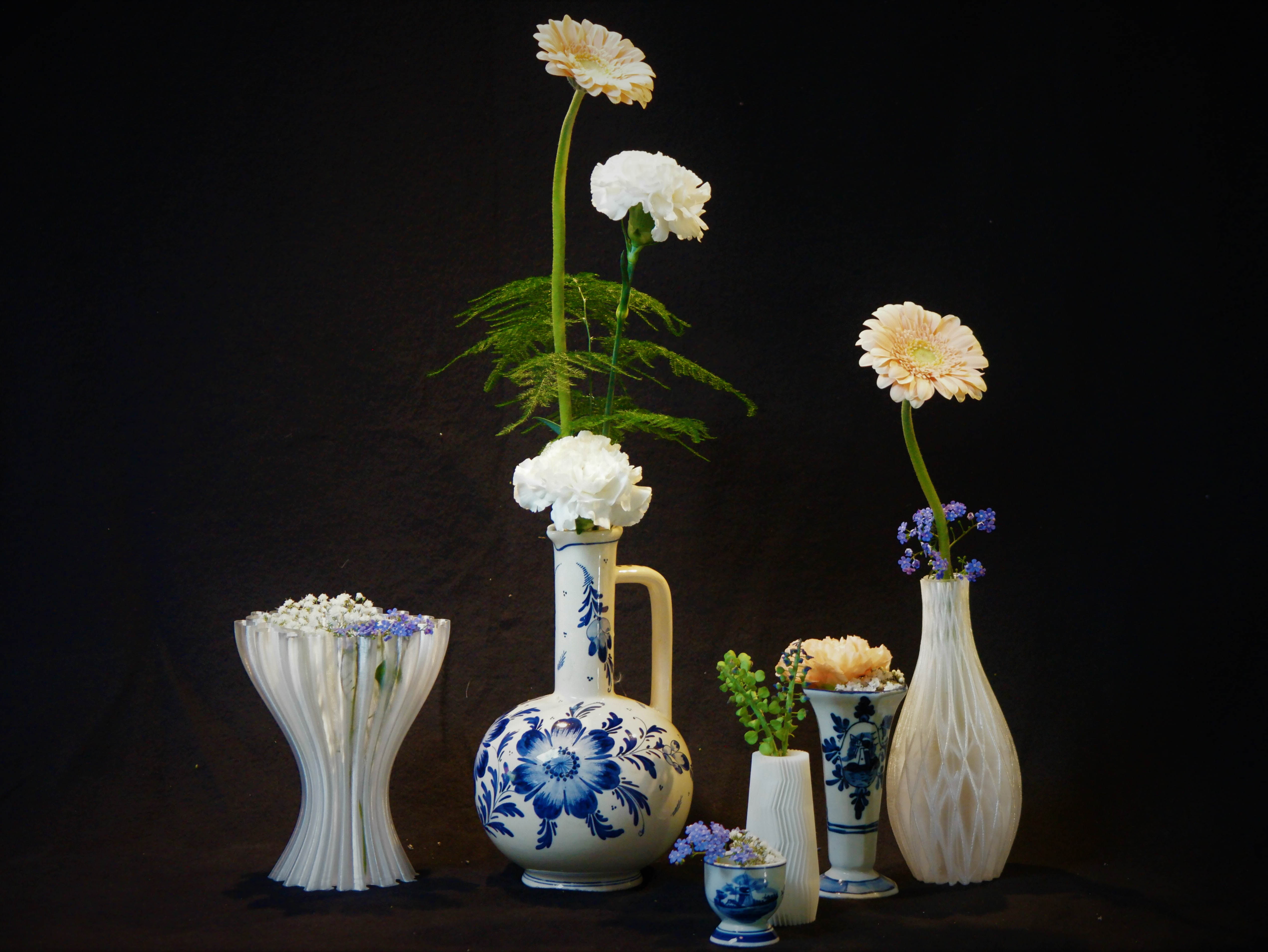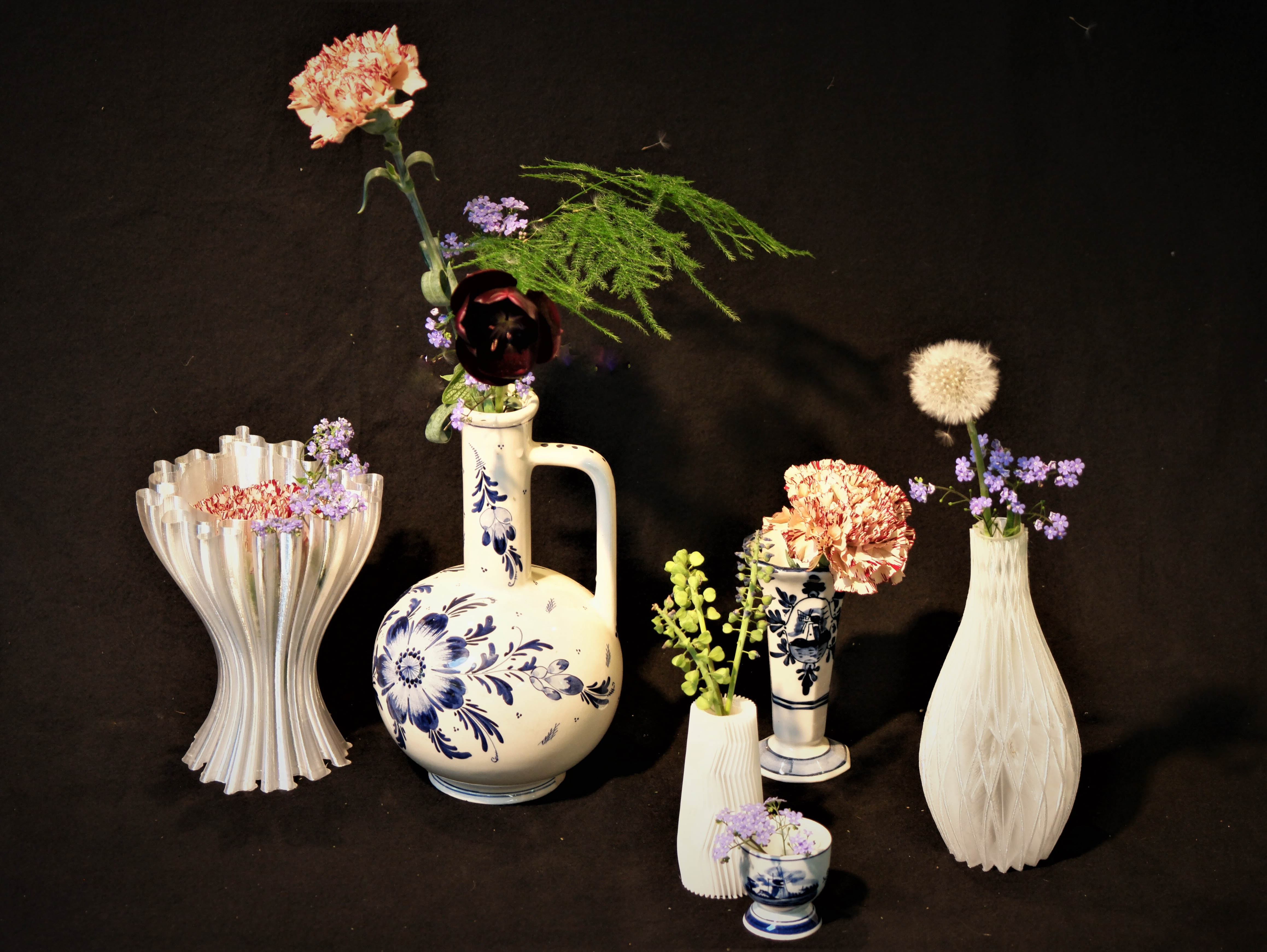Where trends and tradition meet
Nicky Markslag has been very active in the flower sector in various ways for many years. As an arranger, teacher and florist she is not only very passionate in her profession in the Netherlands, she also has a lot of experience internationally in all different parts of our beloved sector. Nicky is a fun, enthusiastic, creative flower arranger with a lot of professional knowledge. Although Nicky is also a lot more limited in her work during the corona crisis, she is not one to sit and wait. She gets new inspiration from the most special objects, which she gratefully uses. Recently Nicky posted a nice message on Facebook, in which she combined her own craftsmanship with her son Erik Hoogeveen’s hobby.
"Because giving workshops is not an option at the moment, I would like to inspire flower lovers in a simple way. It is for instance very nice to look for a collection of vases and to find that area of tension in the different shapes and styles. This tension is between traditional (eg Delft Blue) and the trendy 3D-printed vases (Dutch Design by my son Erik) or other glasses that contrast and connect. Especially for those who like to make something themselves, it shouldn't be too technical and complicated and this might just be a really nice challenge!”
Nicky tells us that the tension between trend and tradition is very interesting to work with. As a florist you can mix your old things with a new style very nicely. Instead of throwing away or buying new things, it fits in this era to alienate the old by matching it with something crazy.
Flower art should not just be a trick. You need to determine your inspiration and the origins of your material and you need to be able to delve into what you do with it!
Naturally your target group also plays a part. This does not mean, of course, that you have to bow to this target group, no, you can inspire them. You will need to remain a little bit trend-sensitive so that you can continue to delve into what you are doing.
Erik Hoogeveen, Nicky's son, has purchased a 3D printer, which he uses to make fun hobby things. Before you can get started with a 3D printer, you have to study the principle very well. 3D printing is not ‘a quick fix’, printing a vase for instance takes time.
However, Eric says enthusiastically: “The concept is just really cool! I really like being able to print flaps, boxes, buttons, etc. locally to repair things at home, in the car or make something for friends and family! For example, I designed and printed a simple part for an electric bicycle conversion that was not available on the market. In addition, I can also easily print cabinets for electronics projects. In fact, I could also print all kinds of forms and shapes and statuettes for example, but that doesn't appeal to me. ”
In addition to a 3D printer, you need a control computer. The more expensive printers have those built in, the entry-level models do not. This computer converts the 3D drawing of the design into coordinates that the printer "understands". It is very important that the printer is set accurately (temperature, direction, how much material per movement etc). Fortunately, there is a lot of information available on the internet, such as YouTube videos that explain all this. Erik calls this his strategy game. If the setting is not done correctly, your print will go wrong. The material burns, or the object does not become waterproof, for example.
In terms of printing material, there are many possibilities. Erik mainly uses PLA and PETG himself.
PETG is strong and available in different colors. And not unimportant: it is recyclable. PLA is a sustainable material, made from lactic acid that is obtained from agricultural crops such as corn and sugar cane. PLA is not the strongest material, but it is ideal to make an inner pot or to prototype something. As soon as it is exposed to the sun, the plastic melts and deforms. PLA is available in very nice colors, such as glow in the dark, wood, fluorine or glitter.
As a florist you can use a 3D project in different ways, both by yourself and with the help of others. You can make a 3D design yourself, or do this in collaboration with a designer. Printing small quantities is very easy for a florist who wants to learn more about this. The vases that Erik has now made for Nicky took about 6 hours per vase to print. So you can easily make your own designs. If you want larger quantities, you might want to outsource this. But… .. the style and design are your own and can be a unique addition to your assortment, with which you can really distinguish yourself as a florist.
FloraPodium, 18 June 2020


